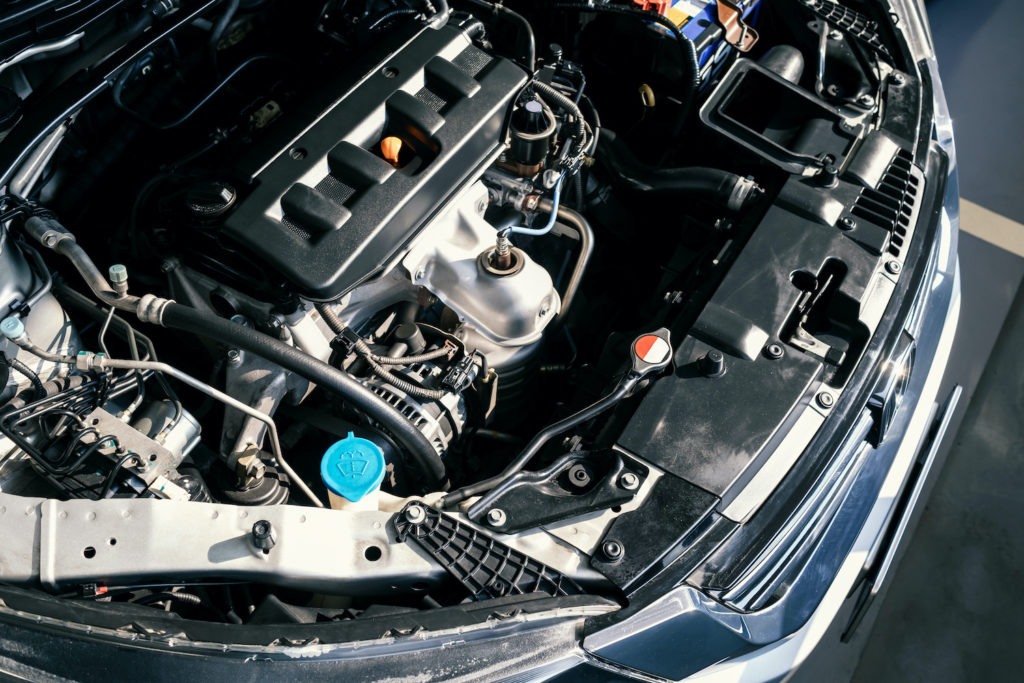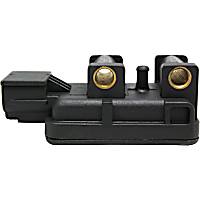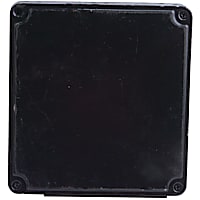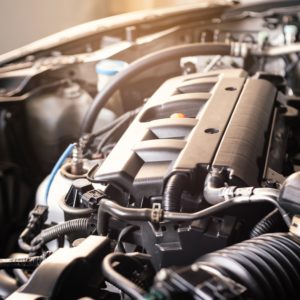Modern vehicles are equipped with on-board diagnostic (OBD) systems to help you or a mechanic identify issues in your vehicle. One example of an OBD-II code that may be logged on various makes and models is code P0069. Here’s some information that may be helpful if your scan tool reads this code.
What Does the P0069 Code Mean?
Diagnostic Trouble Code (DTC) P0069 stands for “Manifold Absolute Pressure – Barometric Pressure Correlation.”It is logged when the powertrain control module (PCM) detects that the difference between the manifold absolute pressure (MAP) sensor voltage and the barometric (BARO) sensor reading varies too much.
Once the throttle is at a wide open position, the PCM may also check if the voltage signals from your MAP and BARO sensors are correct.

A MAP sensor’s main function is to monitor the pressure in the engine manifold. It’s used by the PCM to monitor engine load. It converts engine vacuum into an electrical signal that is sent to the PCM. As your car accelerates under load, the engine vacuum also drops. A drop in engine vacuum means that the absolute pressure in the intake manifold has increased.
Vehicle engines may also come equipped with a barometric pressure sensor. This sensor detects subtle changes in atmospheric air pressure. It then converts this signal to an electrical signal that is sent to the PCM for interpretation.
In most cases, the MAP sensor and BARO sensor are contained within the same housing. The MAP sensor is connected to manifold vacuum, while the BARO sensor is vented to the atmosphere. However, there are some vehicles where the MAP sensor and BARO sensor are stand-alone components.
Input from these sensors and other crucial sensors, such as the mass airflow sensor and throttle position sensor, is used by the PCM to monitor load and altitude.
More About MAF and BARO
On some Mass Airflow (MAF) systems, the MAF sensor also measures barometric pressure, but some have a separate MAP sensor that measures manifold pressure and barometric pressure. Some simply have a stand-alone BARO sensor not connected to the manifold.
On some Mass Airflow (MAF) systems, the MAF sensor also measures barometric pressure, but some have a separate MAP sensor that measures manifold pressure and barometric pressure. Some simply have a stand-alone BARO sensor not connected to the manifold.
– Richard McCuistian, ASE Certified Master Automobile Technician
When the key is switched on initially, the ECM/PCM records closed throttle voltage, intake air and engine coolant temperatures, and barometric pressure using the MAP sensor or the BARO sensor. These factors determine how much fuel is delivered when the engine is starting and after it fires up.
An incorrect BARO reading will cause incorrect fuel delivery and wonky fuel trims. But the BARO sensor, if there’s no rationality check with another sensor, can give a bad reading without throwing a code directly related to it.
You can find more useful information that can help you diagnose and fix P0069 in our technical discussion about intake manifold pressure.
Note: The definition of code P0069 may be different depending on the vehicle manufacturer. Consult the appropriate repair manual or repair database for the exact code definition.

What are the Possible Causes of the P0069 Code?
Here are the possible triggers of this error code:
- Malfunctioning MAP or BARO sensor
- Issues with the MAP sensor or BARO sensor circuit
- Damaged vacuum lines (between the intake manifold and MAP sensor)
- Failed PCM
What are the Common Symptoms of a P0069 Code?
- Illuminated check engine light
- Increased fuel consumption
- Engine performance problems, such as lack of power and stalling
How to Diagnose a P0069 Code
Diagnosing a P0069 code can prove challenging. If you’re not a seasoned DIYer, the best course of action is to take your vehicle to an auto repair shop. A mechanic would know how to diagnose and identify the root cause of the problem.
However, if you prefer to diagnose the code yourself, we suggest consulting a vehicle-specific repair manual or an online database to help you identify the right diagnostic procedures for your vehicle.

How to Fix a P0069 Code
There is no universal fix for code P0069. Remember that vehicles are made and configured differently, so the exact diagnostic and repair procedures may vary depending on the vehicle you’re trying to fix. For example, repair steps for a code P0069 on a Mitsubishi may not work for a code P0069 on a Mazda.
If you have the tools and the technical know-how to do the repairs yourself, consult a vehicle-specific repair manual or invest in an online database subscription. These resources contain information that may be helpful for fixing the P0069 code.
Where to Get Engine Components to Fix Code P0069
If you need to replace the MAP sensor or any of the parts mentioned above, don’t put off shopping for the component you need. Otherwise, the faulty part could cause issues that require costly repairs.
Finding the right engine components in auto parts shops can be tricky, but with CarParts.com, it only takes a few minutes. Our website has a selector that allows you to quickly narrow down your options based on your vehicle’s year, make, and model. You can also use the filters to check out the ones that match your preferred brand, price, and specs.
Rest assured that all our replacement parts come from trusted manufacturers in the industry. Each part in our catalog is handpicked by our team of experts to ensure they pass industry standards.
Plus, with our strategically located warehouses, you can count on fast and efficient shipping. If you want to confirm something or have questions about our products, our dedicated customer service team is here to help.
Don’t let engine issues slow you down. Shop for engine components at CarParts.com today to clear the code in no time!
Products Mentioned in this Guide
Any information provided on this Website is for informational purposes only and is not intended to replace consultation with a professional mechanic. The accuracy and timeliness of the information may change from the time of publication.


 MAP Sensor
MAP Sensor
 Barometric Pressure Sensor
Barometric Pressure Sensor
 Engine Control Module
Engine Control Module
















